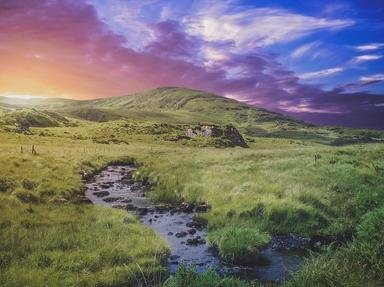Quiz Answer Key and Fun Facts
1. The Irish language name for Derry city is Doire. What does this mean in English?
2. Which of these intact and complete man-made features makes Derry unique as an Irish city?
3. What is the name of the river flowing through the centre of Derry that separates the almost totally Catholic 'Cityside' from the 'Waterside' where most of Derry's Protestant community live?
4. In which industry, employing mostly women, was Derry such a world leader in the 19th century (and beyond) that Karl Marx referred by name to one of its factory owners in 'Das Kapital'?
5. The city's river is spanned by one of the few double-decker road bridges in Europe, named after the first Prime Minister of the Northern Ireland state established in 1921. Who was this politician?
6. What was the name given to the fullscale clash between Derry Nationalists and the Royal Ulster Constabulary over three days in August 1969, which brought British soldiers on to the streets of the city and led to the beginning of more than two decades of armed conflict in the North of Ireland?
7. On 30th January 1972, British soldiers shot dead 13 unarmed civilians who were part of a civil rights demonstration in the Bogside district of Derry. Which British regiment was most closely involved in this incident known as Bloody Sunday?
8. Which elected Derry politician in both the British and European parliaments received the Nobel Peace Prize in 1998 for his role in the peace process to end the 25 years of conflict known as 'the Troubles'?
9. The name of which Derry alternative rock band, formed by guitarist John O'Neill after the 1983 break up of 'The Undertones', was an ironic reference to the rioting that regularly formed part of political conflict in Derry?
10. "The Town I Loved So Well" is a Phil Coulter song about growing up in Derry. In 1985 it was found playing in the car of Dan White after he killed himself by carbon monoxide poisoning. Which San Francisco gay rights campaigner had White shot dead eight years before?
Source: Author
dsimpy
This quiz was reviewed by FunTrivia editor
bloomsby before going online.
Any errors found in FunTrivia content are routinely corrected through our feedback system.

